| ________________
CM . . . . Volume XVII Number 35. . . .May 13, 2011. 
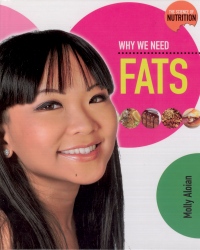 |
Why We Need Fats. (The Science of Nutrition).
Molly Aloian.
St. Catharines, ON: Crabtree, 2011.
48 pp., pbk. & hc., $11.95 (pbk.), $21.56 (RLB.).
ISBN 978-0-7787-1694-5 (pbk.), ISBN 978-0-7787-1687-7 (RLB).
Subject Headings:
Fatty acids in human nutrition-Juvenile literature.
Lipids in human nutrition-Juvenile literature.
Grades 5-8 / Ages 10-13.
Review by Barbara McMillan.
***/4
|
| |
|
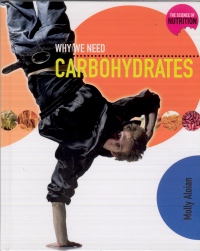 |
Why We Need Carbohydrates. (The Science of Nutrition).
Molly Aloian.
St. Catharines, ON: Crabtree, 2011.
48 pp., pbk. & hc., $11.95 (pbk.), $21.56 (RLB.).
ISBN 978-0-7787-1693-8 (pbk.), ISBN 978-0-7787-1686-0 (RLB).
Subject Heading:
Carbohydrates in the body-Juvenile literature.
Grades 5-8 / Ages 10-13.
Review by Barbara McMillan.
***/4
|
| |
|
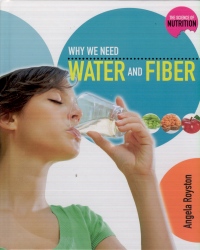 |
Why We Need Water and Fiber. (The Science of Nutrition).
Angela Royston.
St. Catharines, ON: Crabtree, 2011.
48 pp., pbk. & hc., $11.95 (pbk.), $21.56 (RLB.).
ISBN 978-0-7787-1698-3 (pbk.), ISBN 978-0-7787-1691-4 (RLB).
Subject Headings:
Water in the body-Juvenile literature.
Fiber in human nutrition-Juvenile literature.
Grades 5-8 / Ages 10-13.
Review by Barbara McMillan.
***/4
|
| |
|
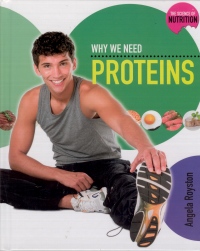 |
Why We Need Proteins. (The Science of Nutrition).
Angela Royston.
St. Catharines, ON: Crabtree, 2011.
48 pp., pbk. & hc., $11.95 (pbk.), $21.56 (RLB.).
ISBN 978-0-7787-1696-9 (pbk.), ISBN 978-0-7787-1689-1 (RLB).
Subject Heading:
Proteins in human nutrition-Juvenile literature.
Grades 5-8 / Ages 10-13.
Review by Barbara McMillan.
***/4
|
| |
|
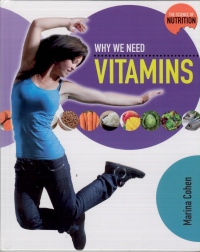 |
Why We Need Vitamins. (The Science of Nutrition).
Marina Cohen.
St. Catharines, ON: Crabtree, 2011.
48 pp., pbk. & hc., $11.95 (pbk.), $21.56 (RLB.).
ISBN 978-0-7787-1697-6 (pbk.), ISBN 978-0-7787-1690-7 (RLB).
Subject Heading:
Vitamins in human nutrition-Juvenile literature.
Grades 5-8 / Ages 10-13.
Review by Barbara McMillan.
***/4
|
| |
|
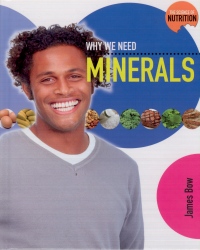 |
Why We Need Minerals. (The Science of Nutrition).
James Bow.
St. Catharines, ON: Crabtree, 2011.
48 pp., pbk. & hc., $11.95 (pbk.), $21.56 (RLB.).
ISBN 978-0-7787-1695-2 (pbk.), ISBN 978-0-7787-1688-4 (RLB).
Subject Heading:
Minerals in human nutrition-Juvenile literature.
Grades 5-8 / Ages 10-13.
Review by Barbara McMillan.
***/4
|
| |
|

excerpt:
You might not think about the food you put in your mouth, but what you eat makes a big difference to your health. Inside your food are many important nutrients you need to stay healthy… The main nutrients your body needs are carbohydrates, fats, and proteins, but you also need tiny amounts of other nutrients called vitamins and minerals. You have to eat enough – but not too much – of each type of nutrient to stay healthy. You also need to eat the correct number of servings from each group according to your age. Luckily, each nutrient is found in many different foods, so you can choose healthful foods that you like. (From Why We Need Vitamins.)
Crabtree’s new series, “The Science of Nutrition,” provides sound information to students in Grade 5 science who are learning about human organ systems and the maintenance of a healthy body. The six books that make up the series focus on the main nutrients that all people require in order to stay alive and healthy. These are proteins, carbohydrates, fats, water and fiber, vitamins, and minerals. Each book concentrates on one of these six nutrients and begins with information that helps readers to know what the specific nutrient is, the foods in which the nutrient is contained, the quantity of the nutrient that is needed in one’s daily diet, how to read food labels to determine the quantity of the nutrient in a specific food product, and the organs involved in the digestion of the nutrient. As factual as this may seem, the knowledge about nutrition and well-being is not always presented as if written by an author of science textbooks. There are passages about food allergies and the consequences of diets lacking in particular nutrients that will be of genuine interest to students. There is also the occasional piece of data the will likely cause surprise because the fragments of science knowledge provided are quite remarkable. Angela Royston, for example, writes about water and mentions that each person on the planet loses about 3 liters of water every day, and that nearly half of this water is sweat, water in feces, and water vapour that is exhaled when breathing. The other 1.5 liters is urine. Readers are also told that no one can survive more than three days without water and that the water they drink likely contains water molecules available to dinosaurs. In Why We Need Proteins, Royston states that there are 28 billion cells in every 28 grams of body weight and challenges students to calculate the number of cells in their body. Readers also learn that the cells lining the stomach have a life span of only a few days before they are destroyed by stomach acid, and that the liver can regenerate parts that are surgically removed. Unfortunately, most of this knowledge is presented in text boxes that are not part of the main text.
Following the age-appropriate content of the first 39 or 41 pages of each book, the final pages include a section on special diets, including diets for those with food allergies and diets for those who choose not to eat certain foods for ethical reasons, as well as age-specific nutritional needs. This is followed by two pages of “food facts and stats”, a glossary of terms, suggestions for further reading, and an index.
Interspersed throughout the 48 pages of text are colourful dialogue blurbs and text boxes with the headings “Body Talk,” “Did you know?” and, less frequently, “Try this…”. The activities in “Try this…”, which can seem like an afterthought, range from keeping a daily food journal for a week and developing a day’s diet for someone with celiac disease to making a vitamin-rich fruit, yogurt, and granola parfait and removing the iron used to fortify dry cereal. As with other Crabtree publications, stock photographic images and diagrams from Shutterstock illustrate all but the final three or four pages of each book. The cover images and a number of the images within the texts are of women and men older than the 10 to 13-year-old girls and boys for whom the series has been written. Upon first reading, I found this odd but have come to believe that the authors and series editor may have decided to focus on eating for well-being, which has no age limit.
Recommended with reservations.
Barbara McMillan is a teacher educator and a professor of science education in the Faculty of Education, the University of Manitoba.

To comment on this title or this review, send mail to
cm@umanitoba.ca.
Copyright © the Manitoba Library Association. Reproduction for personal use is permitted only if this copyright notice is maintained. Any other reproduction is prohibited without permission.
NEXT REVIEW |
TABLE OF CONTENTS FOR THIS ISSUE- May 13, 2011.
AUTHORS |
TITLES |
MEDIA REVIEWS |
PROFILES |
BACK ISSUES |
SEARCH |
CMARCHIVE |
HOME |





